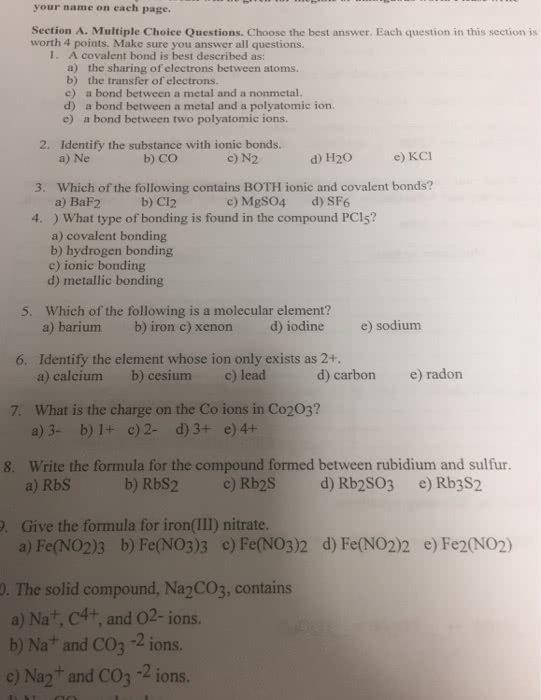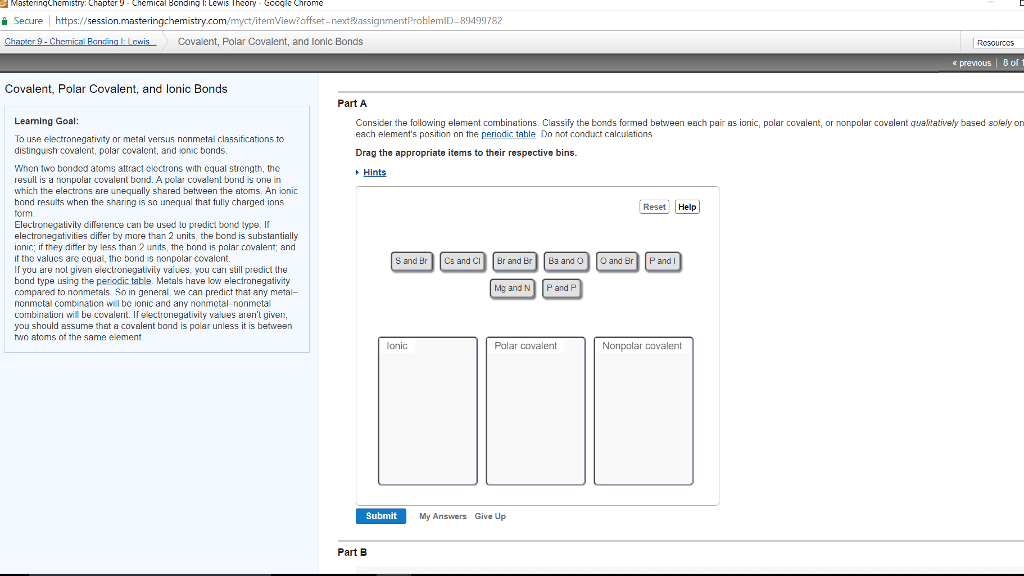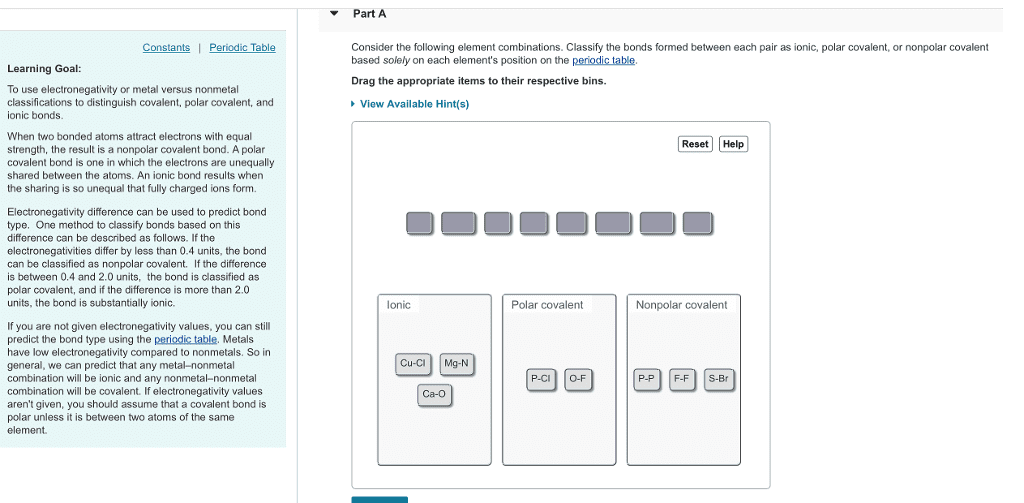CHEM 6A Lecture Notes - Lecture 6: Valence Electron, Octet Rule, Ionic Bonding


19
CHEM 6A Full Course Notes
Verified Note
19 documents
Document Summary
Elements that have similar properties have the same number of valence electrons. Valence electrons are the outer-most electrons (highest n value) Number of valence electrons equal the group (column) number. Represent the valence electrons around the element symbol. The properties of substances are determined by the type of bonding within the substance. Chemical bonds are the attractive forces that hold two or more atoms together. Ionic bonding: electrons are transferred from a metal to a nonmetal. Covalent bonding: electrons are shared between two nonmetals. Metallic bonding: metal atoms pool their valence electrons. The tendency of atoms in molecules or ionic compounds to achieve an electron configuration of. 8 electrons: exceptions: h and he want to get to 2 electrons (duet rule) Atoms acquire octets: to become more stable, by losing, gaining, or sharing valence electrons, by forming ionic or covalent. Valence electrons are shared among all other atoms in a metal sample: most are solids.




